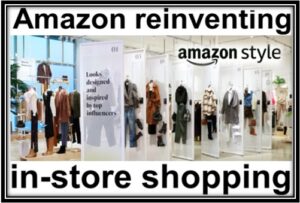It is not digitalization or technology adoption, it is more than that…as per the latest research, it is found that 60% of the workers of your organization will need additional training in the next four years. The focus must be on identifying the similarities between future and existing roles. It would help plug the skill gaps and retain the present team.
Read MoreArchive for category Consulting
Businesses across the globe are undergoing some kind of transformation. While big corporates are already in the process of deriving greater benefits from this, it is normal that SMEs would lag behind in the process. It’s time to identify this as one of the most important strategies for long-term success. Some tips for making a successful move:
- not only transforming the core business but re-inventing it for long-term success
- sustainability as the base with robust omnichannel
- agile and structured transformation process with pilot projects
- focusing on talent strategies significantly and acquiring matching talent radical
- change in the mindset of leaders and managers mitigating the downside while aggressively pursuing the upside.
- environmental, social, and governance (ESG)
#reinventing #operatingmodel #SMEs #transformation #sustainability #omnichannel #talentstrategies #mitigate #esg #business
Read MoreThe world economy is passing through a difficult phase with a sharper-than-expected slowdown, where inflation is making things worse. There are several factors – Russia’s invasion, tighter-money market, rising living costs, and covid-19.
In this scenario, big corporates enjoy having additional headroom and support systems, despite their bigger problems.

For SME entrepreneurs, conditions turn difficult when they need to deal with such situations with limited resources and organizational bandwidth.
As I learned in my 3-decades long corporate life, avoiding being reactive to such situations upfront, can be of great help…we can address the issues with deliberate calm keeping in mind the growth objectives and compassion.
Your thoughts…
#SME #Businessconsulting #Globaleconomiccondition #Growth strategy #Growth enablers
Read MoreTrue scaling growth is all about designing business models and organization in a way to generate consistent revenue growth without adding a ton of extra cost, sounds difficult? An extra 5% revenue growth per year with an additional 3-4% points of total shareholder returns (TSR) results in value creation of 33-45% over time…few enablers:
#Growth strategy #Growth plan #Growth enablers #Value creation #Start-up #Business consulting

Telehealth is gaining popularity
When the COVID-19 pandemic started, both physicians and patients embraced telehealth. In April 2020, the number of virtual visits increased by 78 times over the previous two months, accounting for nearly one-third of all outpatient visits. In May 2021, 88% of consumers reported using telehealth services at some point since the COVID-19 pandemic began. Physicians were also significantly more at ease with virtual care. In 2021, 83% of those polled in the McKinsey Physician Survey offered virtual services, compared to only 13% in 2019. The growth (and valuations) of virtual-first care providers indicate that patient demand is consistent and growing.

Utilizing Telehealth
Virtual health care, also known as telemedicine or telehealth, is much more than a low-cost digital substitute for in-person care. When done correctly, telehealth can improve patient health, reduce costs, and make it easier for those who live in areas with a scarcity of health providers to access care. Telemedicine, through digital platforms, can connect patients to the best doctors, even if they practice hundreds of miles away. Virtual healthcare can also help to avoid unnecessary ER visits. According to one 2019 study, ER services for non-emergency, treatable conditions can cost up to 12 times more than visiting a doctor’s office, a $32 billion difference each year.

Concerns about digital health are divided
Since July 2020, physician confidence in the effectiveness of telehealth has declined. By mid-2021, consumers’ acceptance of telehealth had waned from its early COVID-19 peak: utilization was down to 38 times pre-COVID-19 levels. In 2021, more physicians were offering telehealth but recommending in-person care when possible, suggesting that physicians are shifting away from URL and preferring a return to IRL (in real life) care delivery. Even when telehealth is available, more doctors are recommending in-person care to their patients when possible. This could imply that physicians are reconsidering virtual care.

Latest trends in telehealth
According to a March 2021 McKinsey Consumer Survey, those under the age of 55, in higher income brackets, and with individual or employer-sponsored group insurance are more likely to use telehealth. Virtual care is also in higher demand in mental and behavioural health than in other specialties, with 62 percent of mental-health patients completing their most recent visit virtually versus 20 percent of primary-care patients. As the pandemic progresses, consumers continue to prefer the convenience of digital engagement and virtual-care options. This preference may allow more patients to access care while also assisting providers to grow.

The number of virtual-first players continues to grow, and physicians are struggling to keep up. The patient–physician relationship is also changing. According to McKinsey’s April 2021 Physician Survey, 58 percent of respondents have lost patients to other physicians or health systems since the start of the COVID-19 pandemic. According to surveys, doctors and patients have very different perspectives on telehealth and other forms of digital engagement. Most importantly, virtual care has the potential to significantly improve patient outcomes by delivering timely care to those who would otherwise delay it or who live in areas with shortage in service providers. In the long run, the strategic, purposeful design of a hybrid IRL/URL healthcare delivery model will benefit both patients and service providers.
For marketing, financial, and other business-related services, please visit our website http://businessplandesk.com.
#telehealth #telehealthcare #business #marketing #professionalservices #ecommerce #consultingservices #consulting #businessconsulting #businessconsultant
Read MoreAmazon Style, Amazon’s brick-and-mortar clothing store, has been opened in the Los Angeles area at The Americana at Brand mall. It joins Whole Foods, Amazon Go, and Amazon Fresh as new physical locations for Amazon. Amazon Style will sell clothing from Levi’s, Tommy Hilfiger, Champion, and other brands. Amazon Style is outfitted with technology that is intended to improve the shopping experience and eliminate unnecessary steps.

Each piece of clothing inside the store has a QR code that customers can scan to create a list of items to try on in a fitting room or send directly to pick up for purchase, eliminating the need to carry a large number of items. Another feature is that customers can select clothing on Amazon.com, have it delivered to the store to try on, and return an item right there if it isn’t to their liking. When you visit the store, employees will gather the clothes for the fitting room and notify you when they are ready for you to try on. Each fitting room also has a touchscreen monitor where customers can ask for more items to try on and/or rate their chosen items as they go. Customers can pay their bill with their Amazon account at the checkout.
For marketing, financial, and other business-related services, please visit our website http://businessplandesk.com.
#brickandmortar #retail #business #professionalservices #marketing #ecommerce #consultingservices
Read MoreOne apparel retailer decided to improve its company’s performance by restructuring its supply chain. It established over a half-dozen smaller fulfilment centers across the country. The centers were situated in low-cost real estate areas. This retailer cut online order costs by 15% per order by replicating a model more common in fast-moving, highly predictable consumer goods. The company also reduced working capital by removing seven weeks of inventory. Since it didn’t have to mark down items that were stranded in stores, it was able to sell more goods at full price. When the retailer saw how well its new supply chain network was performing, it realised it had discovered a potential new business. Almost all of its competitors faced the same issue, where supply chain costs outpaced revenue growth.

The retailer then purchased two online logistics companies that had assisted it in establishing the network and found ways to aggregate orders from various businesses to mitigate parcel costs. The net result is a savings of $1 per order, which is significant for mid – market retailers. This retailer applied its new knowledge to a cooperative model that helps scale benefits and inventory balancing that only the largest big-box retailers can achieve. The retailer developed the model further with technology, robotics, and analytics to provide “supply chain as a service” to competitors. Innovative retailers, such as this one, are turning a fixed-cost, high-capital challenge into a technology-based growth opportunity.
For marketing, financial, and other business-related services, please visit our website http://businessplandesk.com.
#brickandmortar #retail #business #professionalservices #marketing #ecommerce #consultingservices
Read More
The pandemic has had an impact on brick-and-mortar retail, but its difficulties have been exacerbated by known competition from e-commerce sales. However, recent data reveals that brick-and-mortar retail is demonstrating an extraordinary level of resistance to this threat. Despite the challenges that brick-and-mortar stores face, people still prefer to shop there. Although eCommerce is growing, many people still prefer the in-store shopping experience, where they can touch and feel a product before taking it home. Whether a business is brick and mortar or strictly online, retail shopping is a thriving industry. The Brick-and-Mortar store exists at the crossroads of what the Customer wants and what the Retailer wants!

The global retail market generated sales of more than 26 trillion US dollars in 2021, with sales expected to exceed 30 trillion US dollars by 2024. Though the numbers are impressive, we still need to recognize the problems and risks, the brick-and-mortar stores are facing. One biggest problem is eCommerce competition. Most physical retailers are still catching up to the massive shift to e-commerce, which has accelerated during the COVID-19 pandemic and may account for one-third of all retail sales by 2030. Even in this day and age of E-Commerce, the vast majority of retail sales are still conducted in person in a physical store. Even Millennials visit a physical store 50% of the time. Customers prefer an Omni-channel experience rather than a single channel experience.

Many retail chains began to address the supply chain issue a few years ago by shifting significant inventory to their stores, effectively transforming them into mini-e-commerce order fulfilment centres. Stores can act as fulfilment centres and hubs that are much closer to customers than Distribution Centers can ever be. This allows stores to provide more shipping/pickup options while also increasing network capacity, supporting growth, and even lowering shipping costs. Customers can have their goods picked up or shipped locally in whatever manner they prefer. Retailers can make more goods available to customers faster by leveraging inventory in and across stores.
For marketing, financial, and other business-related services, please visit our website http://businessplandesk.com.
Read MoreWater utilities in the United States, particularly smaller ones, have been slow to invest in technology to improve health, safety, and efficiency. Water rates in the United States are lower on average than in peer countries in the European Union and the United Kingdom, despite annual growth of 5% over the last ten years.

The importance of federal investment in water and wastewater infrastructure is widely acknowledged, and efforts to address it are gaining traction. However, even a significant increase in federal funding will not be enough to cover the necessary investment; private capital will also be required. Investor and private-sector interest in traditional and tech-enabled water and wastewater services is growing. If system players are strategic, efficient, and well-coordinated with one another and with the public sector, there is a once-in-a-lifetime opportunity to prepare the system to be resilient, safe, and affordable for future generations.
For marketing, financial, and other business-related services, please visit our website http://businessplandesk.com.
#business #water #infrastructure #business plan expert #business consulting service provider #digital marketing
Read MoreWater scarcity is a major concern in the West, where precipitation is desperately needed. The West’s multi-year drought is expected to continue, if not worsen, in the coming months, according to the National Oceanic and Atmospheric Administration. In California, which did not receive enough much-needed precipitation this winter, extreme drought has increased from 12% to 35% in the last week. The Colorado River’s scarcity is a symptom of a larger problem. The West’s reservoirs have reached dangerously low water levels as a result of the severe drought. Drought conditions in the South, particularly Texas, have worsened in recent months, with more than 90 percent of the state now in drought, according to the most recent US Drought Monitor.

WATER INVESTMENT – FUTURE OF THE WORLD
The need for investment in the US water system is at an all-time high. On average, 14 to 18 percent of total daily treated potable water in the United States is lost through leaks, with some water systems reporting water-loss rates exceeding 60 percent. The 1970s and 1980s saw the construction of much of the nation’s water and wastewater infrastructure. The average water-network pipe in the United States is 45 years old, with some cast-iron pipes dating back more than a century.
To continue to provide safe and dependable service, systems must replace ageing infrastructure. Beyond the need to address the backlog of ageing infrastructure, several challenges add urgency to the need for investment and action. Climate resilience is now a top priority for many US governments and water operators as the frequency and intensity of extreme weather events such as droughts and floods have increased.

In the forthcoming article, we will talk further on the importance of federal investment in water and wastewater infrastructure, follow us here…
For marketing, financial, and other business-related services, please visit our website http://businessplandesk.com.
#business #water #infrastructure #business plan expert #business consulting service provider #digital marketing
Read More![Are you ready for the future world of business? – It’s not technology adoption or digitalization… It is not digitalization or technology adoption, it is more than that…as per the latest research, it is found that 60% of the workers of your organization will need additional training in the next four years. The focus must be on identifying the similarities between future and existing roles. It would help plug the skill […]](http://businessplandesk.com/wp-content/uploads/2023/07/Picture-for-Article_19-07_website-450x285.jpg)
![Re-inventing the operating model by the SMEs can boost global growth… Businesses across the globe are undergoing some kind of transformation. While big corporates are already in the process of deriving greater benefits from this, it is normal that SMEs would lag behind in the process. It’s time to identify this as one of the most important strategies for long-term success. Some tips for making a […]](http://businessplandesk.com/wp-content/uploads/2022/12/Picture-for-Article-450x285.jpg)
![How to deal with the business in this economic condition… The world economy is passing through a difficult phase with a sharper-than-expected slowdown, where inflation is making things worse. There are several factors – Russia’s invasion, tighter-money market, rising living costs, and covid-19. In this scenario, big corporates enjoy having additional headroom and support systems, despite their bigger problems. For SME entrepreneurs, conditions turn difficult […]](http://businessplandesk.com/wp-content/uploads/2022/11/How-to-deal-with-the-business-in-this-economic-condition_for-website-450x285.jpg)

![Telehealth Telehealth is gaining popularity When the COVID-19 pandemic started, both physicians and patients embraced telehealth. In April 2020, the number of virtual visits increased by 78 times over the previous two months, accounting for nearly one-third of all outpatient visits. In May 2021, 88% of consumers reported using telehealth services at some point since the […]](http://businessplandesk.com/wp-content/uploads/2022/07/Article21_Telehealth_PIcture-1-450x285.png)
![Amazon’s brick-and-mortar clothing store Amazon Style, Amazon’s brick-and-mortar clothing store, has been opened in the Los Angeles area at The Americana at Brand mall. It joins Whole Foods, Amazon Go, and Amazon Fresh as new physical locations for Amazon. Amazon Style will sell clothing from Levi’s, Tommy Hilfiger, Champion, and other brands. Amazon Style is outfitted with technology that […]](http://businessplandesk.com/wp-content/uploads/2022/06/Picture_Article20_Brick-and-Mortal_for-website-450x285.jpg)
![Convert competitors into collaborators and customers One apparel retailer decided to improve its company’s performance by restructuring its supply chain. It established over a half-dozen smaller fulfilment centers across the country. The centers were situated in low-cost real estate areas. This retailer cut online order costs by 15% per order by replicating a model more common in fast-moving, highly predictable consumer […]](http://businessplandesk.com/wp-content/uploads/2022/06/Picture4_Article20_Brick-and-Mortal_-450x285.jpg)
![Brick-And-Mortar retailing The pandemic has had an impact on brick-and-mortar retail, but its difficulties have been exacerbated by known competition from e-commerce sales. However, recent data reveals that brick-and-mortar retail is demonstrating an extraordinary level of resistance to this threat. Despite the challenges that brick-and-mortar stores face, people still prefer to shop there. Although eCommerce is growing, […]](http://businessplandesk.com/wp-content/uploads/2022/06/Picture1_Article20_Brick-and-Mortar-450x285.jpg)
![US Water Infrastructure Water utilities in the United States, particularly smaller ones, have been slow to invest in technology to improve health, safety, and efficiency. Water rates in the United States are lower on average than in peer countries in the European Union and the United Kingdom, despite annual growth of 5% over the last ten years. The […]](http://businessplandesk.com/wp-content/uploads/2022/05/Article18D_Federal-investment-450x285.jpg)